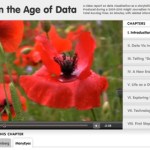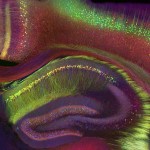Science
Having written in defense of analogies in physics yesterday, I should note that not all of the analogies that are brought out in an attempt to clarify physics concepts are good. For example, there's this incredibly strained opening to a Science News article on entanglement:
If the Manning brothers were quantum physicists as well as NFL quarterbacks, one of them could win his game's opening coin toss every time. The night before they played, the brothers would take two coins from a special quantum box to use the next day. If Peyton's game came first, after learning the outcome of his coin toss…
Regular commenter onymous left a comment to my review of Warped Passages that struck me as a little odd:
The extended analogy between the renormalization group and a bureaucracy convinced me that she was trying way too hard to make sophisticated concepts comprehensible. Also, I'm not really sure that analogies are the best way to explain concepts to people without using mathematics.
I'm not talking about the implication that making sophisticated concepts comprehensible is not worth doing, but rather the negativity toward analogies. It's odd because, if you think about it, a huge chunk of…
Knight Fellow Geoff McGhee created this polished video documentary series about how data visualization is infiltrating and transforming journalism. Interviews with Many Eyes creators Fernanda Viegas and Martin Wattenberg, Amanda Cox of the New York Times, and other dataviz luminaries are coupled with bios and links to further information, some history of visualization techniques, industry context (is dataviz profitable? who's doing it?) and lots of lovely examples. The last section of the video, "First Steps," is a mini-tour of useful DIY sites like Swivel and Wordle (which is ridiculously…
But you can't afford the expensive registration and travel costs? Here's the deal for you: a workshop without walls that you attend and participate in over the internet. The subject of this one is Molecular Paleontology and Resurrection: Rewinding the Tape of Life, a discussion of origins of life research. It should be cool; set aside your afternoons on 8-10 November.
I can't resist interrupting the relatively productive day I'm having working on the new book to point you to Conversación de fÃsica con mi perro, the Spanish-language edtion of How to Teach Physics to Your Dog, which sports this spiffy cover:
I haven't seen a physical copy of this yet, but the vanity search turned up this blog post, which just reproduces the cover copy, but does offer a sample chapter as a PDF. So, you know, if you want to try it before you buy it, there you go...
This also explains the phone call I got yesterday from a journalist in Spain, who wanted to ask me about…
Hippocampus: Broad Overview
Tamily Weissman, Jeff Lichtman, and Joshua Sanes, 2005
from Portraits of the Mind: Visualizing the Brain from Antiquity to the 21st Century by Carl Schoonover
The first time I created a transgenic neuron, it was in a worm, C. elegans -- a tiny, transparent cousin of the earthworm. I injected DNA into the embryonic worm, let it grow up, and voila: there was one eerie green blotch like a little Pac-Man ghost, its long green axon a lime racing stripe running along the worm's transparent body. The worm wiggled, but I was the one hooked: science is beautiful.
You…
I'm spending the day trying to get some work done on the book-in-progress, so I'm avoiding both work- and blog-related stuff. I don't want to leave the site completely quiet, though, so here's a question to ponder, relating to SteelyKid's continuing fascination with Goodnight Moon:
How does a cow jump over the moon?
The father of one of SteelyKid's classmates, who is not originally from the US, asked why there's a cow jumping over the moon in that (or, as SteelyKid puts it: "Cow jumping MOON!!"), and I don't have a good answer. I'm aware of the nursery rhyme and the Tolkien joke, but why…
In a case of poor communication between publicists, I have ended up with not one but two advance copies of Massive by Ian Sample, a forthcoming book about the Higgs Boson. As I barely have time to read one, I don't remotely need two; thus, I will dispose of one with a really simple contest:
I am thinking of an integer between 0 and 1000 (inclusive). The person who comes closest to guessing the number by midnight Eastern time Friday, November 5 wins a copy of Massive.
Leave your guess in the comments. One entry per commenter, please. In the event that two or more people choose the same…
I've run into this particular phenomenon many times: the True Believer in some musty ancient mythology tells me that his superstition is true, because it accurately described some relatively modern discovery in science long before secular scientists worked it out. It's always some appallingly stupid interpretation of a vaguely useless piece of text that wouldn't have made any sense until it was retrofitted to modern science. My particular field of developmental biology has been particularly afflicted with this nonsense, thanks to one man, Dr. Keith L. Moore, of the University of Toronto. He's…
I have nothing useful or interesting to say about electoral politics, but I suspect that's all people will want to read about today. So here's a book post that's been backlogged for quite a while.
Lisa Randall's Warped Passages: Unraveling the Mysteries of the Universe's Hidden Dimensions dates from 2005, and was, I think, part of the huge spate of string-theory-related books at that time (just before the String Theory Backlash books of 2006). It includes the usual survey of the Standard Model and the problems thereof, with an emphasis on the sort of extra-dimension theories that Randall and…
Today's a lab day in my main class for the term, with a fairly involved experiment to measure the charge-to-mass ratio of the electron. This is going to be all kinds of fun, because 1) I can't get into the room to set anything up until an hour before the start of class, and 2) SteelyKid is home sick, which means I can't go in to pull stuff together until about an hour before the start of class. Whee!
Today's a day to (attempt to) accentuate the positive, though, so let's use this as a jumping-off point for a more upbeat topic, namely:
What's the best lab you ever did in a lab science class?…
When the animal is a squid, of course, which are beautiful even in death. Here's the dance of dying chromatophores:
(via Arthropoda)
One of the great things about having declared Vaccine Awareness Week is that it gives me a convenient excuse to revisit topics and blog posts that I had meant to address but that somehow didn't make the cut the first time around. This is the sort of thing that happens fairly frequently in blogging, where there is far too much woo and idiocy for one blogger to have even a hope of ever addressing it all.
And that's just the anti-vaccine movement.
In any case, if there's one thing about the anti-vaccine movement that I've noticed, it's that its members have a very warped view of both science and…
In last weekend's post about arguments from innate differences, I suggested that I might be willing to illustrate my position with adorable toddler pictures. On thinking more about it, I'm a little hesitant to write about this at length, because it could easily topple over into arrogant-physicist territory. But then, it's an excuse to post adorable toddler pictures, so...
So, let me put a short disclaimer up front: I'm not attempting to claim that I have suddenly uncovered a unique and obvious flaw in innate-difference arguments, by virtue of my Big Physicist Brain. I am well aware that the…
The Times Higher Education magazine in the UK, that is. They ran a review of my book a couple of weeks ago, which I've only just noticed:
The approach is quite entertaining. The tone of the book is chatty and contains some truly awful puns involving dogs, which, if you can stand them, make it an attractive and lively read. However, don't be fooled - Emmy is no ordinary dog. She can reason with the informed leaps one may expect from a physics undergraduate, despite peppering her conversation with "squirrel", "bunny" and "chase".
If you're in the UK, the edition the review refers to is on sale…
I finished Jennifer Ouellette's new book a few weeks ago, shortly after my trip to Alabama, but it's taken me a long time to get around to reviewing it due to a combination of too much work and being a Bad Person. There's finally a tiny break in the storm of work, though, so here's a slightly belated review.
The Calculus Diaries is not a book that will teach you how to do math. There aren't worked examples, detailed derivations, or homework problems in the main text. It might, however, teach you not to fear math, as it provides a witty and accessible explanation of the key concepts behind…
It's late October, which means that the thoughts of small children and adults who have never quite grown up turn to selecting appropriate costumes for Halloween. In the spirit of these literary suggestions and these abstract concept suggestions, I thought it would be useful to offer some suggestions for physics-themed costumes, for those who want to dress as something from the greatest science.
Of course, there are some really obvious choices for physics-themed costumes (Einstein: rumpled clothes, white hair, distracted manner, German accent; Feynman: black pants, white shirt, brushed-back…
I'm spending a good chunk of the morning grading the exam that I gave yesterday, so here's a poll on what you might call exam philosophy. Our classes are small, so the bulk of our exams are free-response problems, and we tend to break those problems into sub-parts (1a, 1b, 1c, etc.). There are two approaches to writing these questions that I have seen: one is to use the sub-parts to break a single problem into steps, thus leading students through the question; the other is to write questions where the sub-parts are independent, so that a student who has no clue how to answer part a can still…
In yesterday's post about the experience of science, I mentioned that I had both a specific complaint about the article by Alexandra Jellicoe (which I explained in the post) and a general complaint about the class in which the article falls. I want to attempt to explain the latter problem, partly because I think it will be useful, but mostly because it's stuck in my head, and I need to at least type out the explanation before I can move on to other things.
The article in question doesn't contain all of the elements I'll mention below, but I think it clearly falls into a class of articles that…

